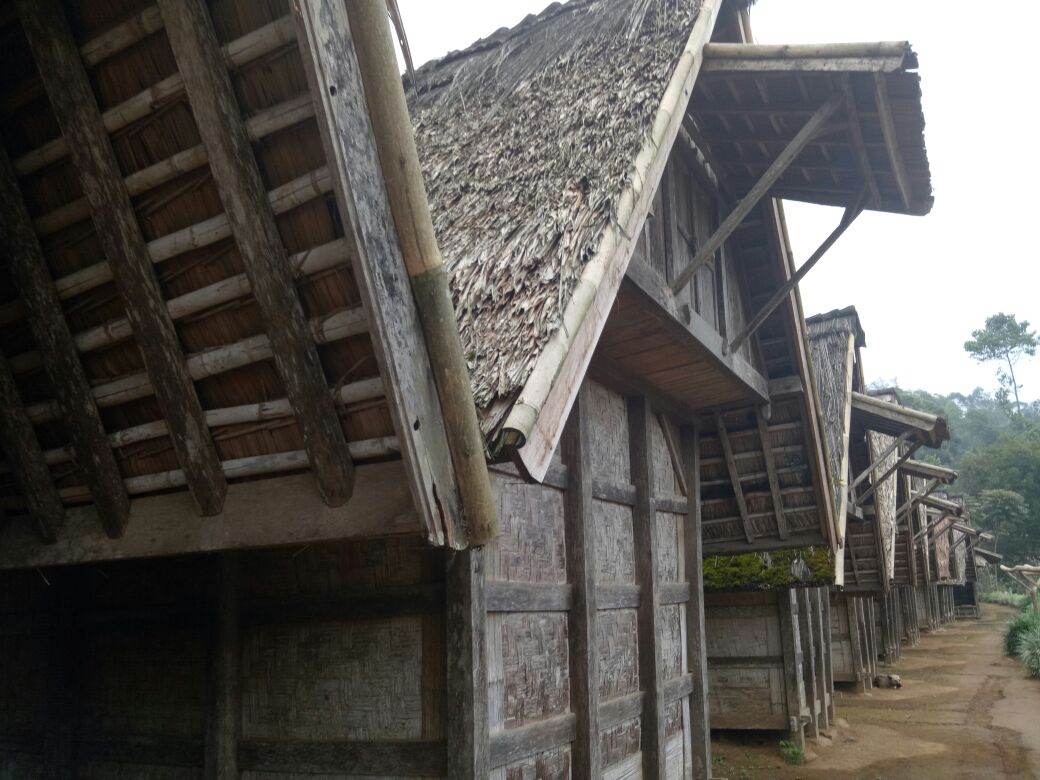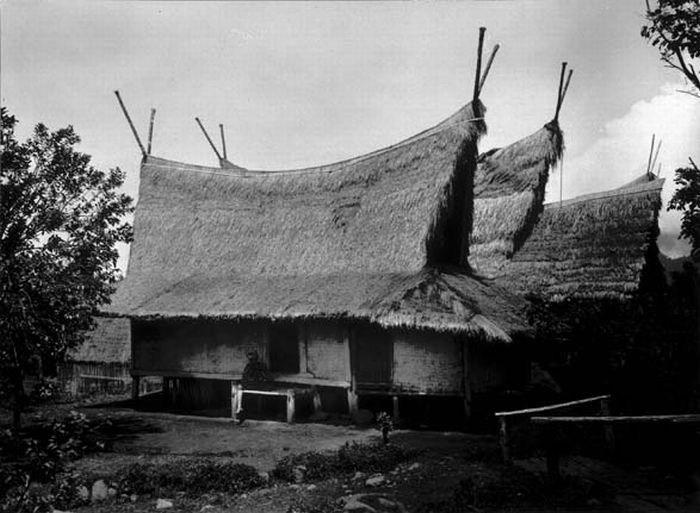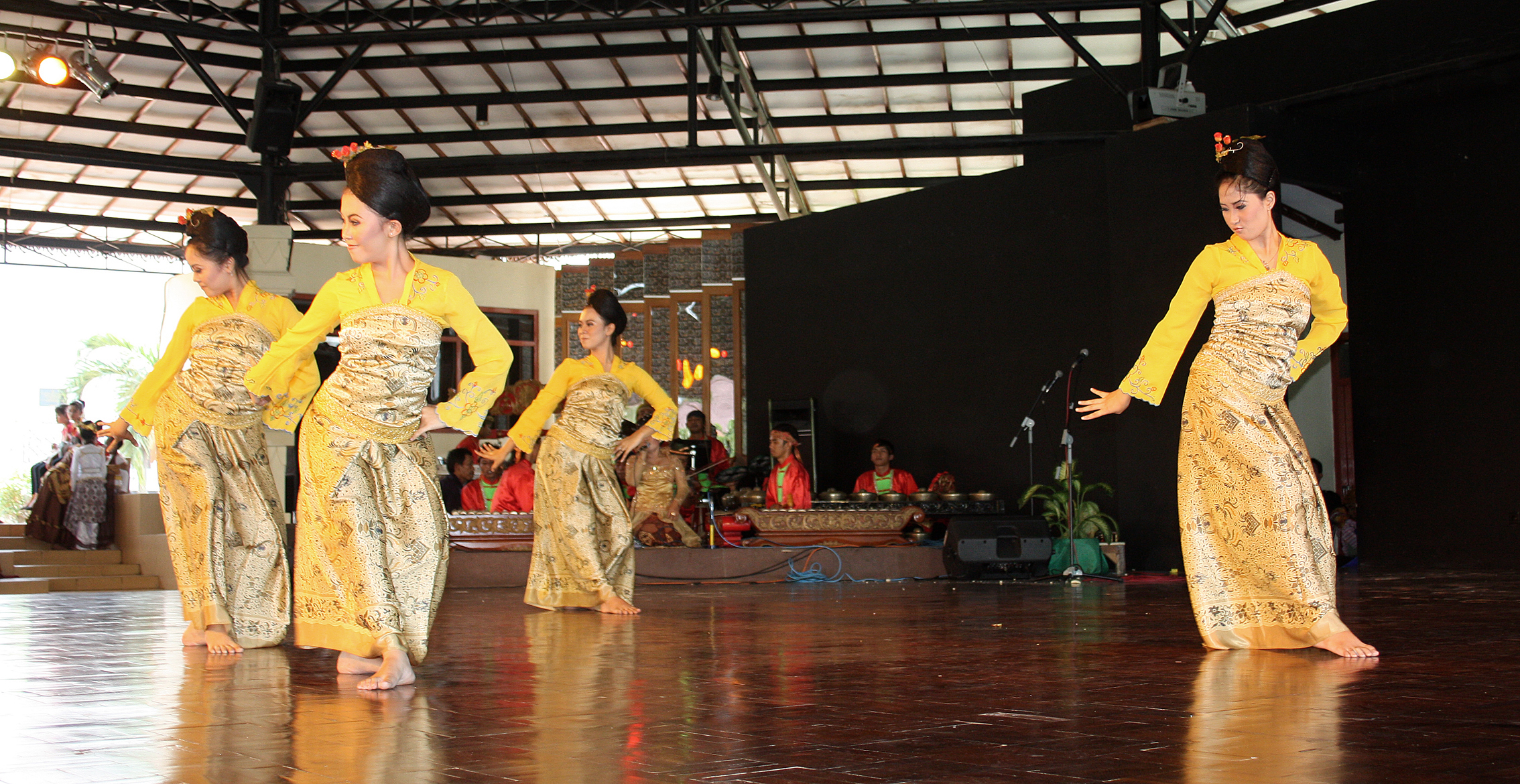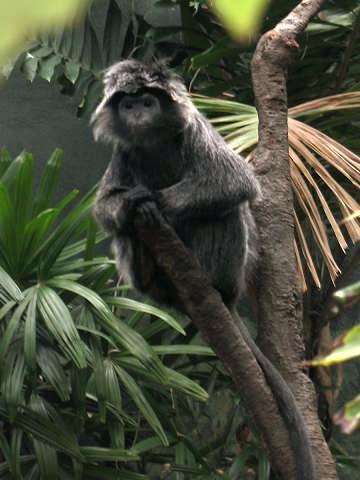|
Ciptagelar
Ciptagelar is a traditional Sundanese hamlet in Sukabumi Regency, West Java. Founded in 1368, the hamlet is the largest village of the ''Kasepuhan'' community which retains traditional Sundanese social structure and strictly adheres to ''adat'' (customary law) to this day. The village is also known for its Sundanese style houses which value simplicity and harmony with nature. Geography Ciptagelar is located in Sirnaresmi village, Cisolok district of Sukabumi Regency. It is deep in the hinterland area of Mount Halimun and Mount Salak which is part of the Mount Halimun Salak National Park. The village is also surrounded by other mountains such as Mount Surandil, Mount Karacang, and Mount Kendang. The village is situated at an altitude of 1,050 meters above sea level and has a temperature ranging from 20 to 26 degrees Celsius. Community The community of Ciptagelar is known as ''Kasepuhan Ciptagelar'' or ''Kasepuhan Banten Kidul''. ''Kasepuhan'' is a traditional Sundanese society ... [...More Info...] [...Related Items...] OR: [Wikipedia] [Google] [Baidu] |
Ciptagelar
Ciptagelar is a traditional Sundanese hamlet in Sukabumi Regency, West Java. Founded in 1368, the hamlet is the largest village of the ''Kasepuhan'' community which retains traditional Sundanese social structure and strictly adheres to ''adat'' (customary law) to this day. The village is also known for its Sundanese style houses which value simplicity and harmony with nature. Geography Ciptagelar is located in Sirnaresmi village, Cisolok district of Sukabumi Regency. It is deep in the hinterland area of Mount Halimun and Mount Salak which is part of the Mount Halimun Salak National Park. The village is also surrounded by other mountains such as Mount Surandil, Mount Karacang, and Mount Kendang. The village is situated at an altitude of 1,050 meters above sea level and has a temperature ranging from 20 to 26 degrees Celsius. Community The community of Ciptagelar is known as ''Kasepuhan Ciptagelar'' or ''Kasepuhan Banten Kidul''. ''Kasepuhan'' is a traditional Sundanese society ... [...More Info...] [...Related Items...] OR: [Wikipedia] [Google] [Baidu] |
Sundanese Traditional House
Sundanese traditional house ( su, imah adat Sunda) refers to the traditional vernacular houses of Sundanese people predominantly inhabited Western parts of Java island (West Java and Banten provinces), Indonesia. The architecture of a Sundanese house is characterized by its functionality, simplicity, modesty, uniformity with a little details, its use of natural thatched materials, and its quite faithful adherence to the harmony with the nature and environment. Form and materials The Sundanese traditionally maintain the knowledge of their ancestors and their traditional lifestyles in a close harmony with nature, which extends to their construction methods; using local materials of timber, stone, bamboo, thatched materials and palm leaves. Sundanese traditional houses mostly take basic form of gable roofed structure, commonly called ''kampung'' style roof, made of thatched materials (''ijuk'' black ''aren'' fibers, ''hateup'' leaves or palm leaves) covering wooden frames and beam ... [...More Info...] [...Related Items...] OR: [Wikipedia] [Google] [Baidu] |
Sundanese Culture
The Sunda or Sundanese ( id, Orang Sunda; su, ᮅᮛᮀ ᮞᮥᮔ᮪ᮓ, Urang Sunda) are an indigenous ethnic group native to the western region of Java island in Indonesia, primarily West Java. They number approximately 42 million and form Indonesia's second most populous ethnic group. They speak the Sundanese language, which is part of the Austronesian languages. The western third of the island of Java, namely the provinces of West Java, Banten, and Jakarta, as well as the westernmost part of Central Java, is called by the Sundanese people ''Tatar Sunda'' or ''Pasundan'' (meaning Sundanese land). Sundanese migrants can also be found in Lampung and South Sumatra, and to a lesser extent in Central Java and East Java. The Sundanese people can also be found on several other islands in Indonesia such as Sumatra, Kalimantan, Sulawesi, Bali and Papua. Origins Migration theories The Sundanese are of Austronesian origins and are thought to have originated in Taiwan. They migr ... [...More Info...] [...Related Items...] OR: [Wikipedia] [Google] [Baidu] |
Kasepuhan
The Kasepuhan or Kasepuhan Banten Kidul are a traditional Sundanese community of approximately 5,300 people, who live in the southern part of Gunung Halimun National Park, in the Indonesian province of West Java. Gunung Halimun National Park is located within the borders of the Sukabumi Regency, Bogor and southern Banten province. The Kasepuhan is called "Kasepuhan Banten Kidul" (Kasepuhan of Southern Banten), their main village is Ciptagelar in the Cisolok subdistrict (''kecamatan'') in the western part of the Sukabumi Regency. The current head of the community, Abah Ugih, inherited the position of leader when his father, Abah Anom, died at the age of 54. Etymology The word ''kasepuhan'' is formed on ''sepuh'', which means "old" in the Sundanese language. It refers to a way of living based on ancestral traditions and eventually, to the local community who lives according to these traditions. History and tradition According to oral information, the Kasepuhan have lived in th ... [...More Info...] [...Related Items...] OR: [Wikipedia] [Google] [Baidu] |
Sundanese People
The Sunda or Sundanese ( id, Orang Sunda; su, ᮅᮛᮀ ᮞᮥᮔ᮪ᮓ, Urang Sunda) are an indigenous ethnic group native to the western region of Java island in Indonesia, primarily West Java. They number approximately 42 million and form Indonesia's second most populous ethnic group. They speak the Sundanese language, which is part of the Austronesian languages. The western third of the island of Java, namely the provinces of West Java, Banten, and Jakarta, as well as the westernmost part of Central Java, is called by the Sundanese people ''Tatar Sunda'' or ''Pasundan'' (meaning Sundanese land). Sundanese migrants can also be found in Lampung and South Sumatra, and to a lesser extent in Central Java and East Java. The Sundanese people can also be found on several other islands in Indonesia such as Sumatra, Kalimantan, Sulawesi, Bali and Papua. Origins Migration theories The Sundanese are of Austronesian origins and are thought to have originated in Taiwan. They migr ... [...More Info...] [...Related Items...] OR: [Wikipedia] [Google] [Baidu] |
Mount Halimun Salak National Park
Mount Halimun Salak National Park is a 400 km2 conservation area in the Indonesian province of West Java on the island of Java. Established in 1992, the park comprises two mountains, Mount Salak and Mount Halimun with an 11-kilometer forest corridor. It is located near the better known Mount Gede Pangrango National Park, but the national park should be accessed from Sukabumi, 2 hours drive to the administration post and then 2 hours drive (30 kilometers) again to Cikaniki post gate. The park contains water catchment areas shielded from urban populations and agricultural areas to the north, as well as several endangered animals and rare birds. Geography Its mountain tops reach 1,929 metres and are often mist-shrouded, while its valleys are thought to hide much that remains to be discovered. Mount Salak is a critical water catchment area for its very high rainfall. The park is an amalgamation of two important ecosystems at Halimun and Mount Salak, which are connected by an 1 ... [...More Info...] [...Related Items...] OR: [Wikipedia] [Google] [Baidu] |
Huma Ciptagelar
Huma or HUMA may refer to: Geography * Huma, a village in Samuil Municipality, Razgrad Province, Bulgaria * Huma, Iran, a village in Lorestan Province, Iran * Huma County, a county of Daxing'anling Prefecture in Heilongjiang, China * Huma River (Heilongjiang), a tributary of the Amur River in Heilongjiang, China * Huma River (Romania), a tributary of the Nemţişor River in Romania Other uses * Huma (company), British health technology company * Canadian House of Commons Standing Committee on Human Resources, Skills and Social Development and the Status of Persons with Disabilities (HUMA) * Heterogenous Unified Memory Access (hUMA), a cache-coherent shared memory design * Mbarara Airport (ICAO code), Uganda * Huma bird, a mythical bird of Iranian legend * Huma Dragonbane, a character in the Dragonlance world * Leaning Temple of Huma, a shrine near Sambalpur, India People with the name * Huma Abedin, aide to Hillary Clinton * Meher Baba or Huma, Indian mystic and spiritual m ... [...More Info...] [...Related Items...] OR: [Wikipedia] [Google] [Baidu] |
Tourist Attractions In West Java
Tourism is travel for pleasure or business; also the theory and practice of touring, the business of attracting, accommodating, and entertaining tourists, and the business of operating tours. The World Tourism Organization defines tourism more generally, in terms which go "beyond the common perception of tourism as being limited to holiday activity only", as people "travelling to and staying in places outside their usual environment for not more than one consecutive year for leisure and not less than 24 hours, business and other purposes". Tourism can be domestic (within the traveller's own country) or international, and international tourism has both incoming and outgoing implications on a country's balance of payments. Tourism numbers declined as a result of a strong economic slowdown (the late-2000s recession) between the second half of 2008 and the end of 2009, and in consequence of the outbreak of the 2009 H1N1 influenza virus, but slowly recovered until the COVID-19 ... [...More Info...] [...Related Items...] OR: [Wikipedia] [Google] [Baidu] |
Ministry Of Education And Culture (Indonesia)
The Ministry of Education and Culture ( id, Kementerian Pendidikan dan Kebudayaan, abbreviated as Kemendikbud) was a government ministry which organises early childhood education, elementary education, secondary education and community education affairs and the management of culture within the Indonesian government. The ministry once transferred its duty organised higher education affairs at the first presidency of Joko Widodo's Working Cabinet (Joko Widodo), when higher education affairs were transferred to the Ministry of Research, Technology and Higher Education (Indonesia), Ministry of Research, Technology and Higher Education. Then in his second term, its duty transferred back to Ministry of Education and Culture when Ministry of Research, Technology and Higher Education has changed its name to Ministry of Research and Technology/National Research and Innovation Agency (Indonesia), Ministry of Research and Technology/National Research and Innovation Agency. The ministry was f ... [...More Info...] [...Related Items...] OR: [Wikipedia] [Google] [Baidu] |
Debus
Debus is a French name in origin. It is commonly used as a surname. Notable people with the surname include: * Allen G. Debus (1926–2009), American historian of science * Bob Debus (born 1943), Australian politician * Jon Debus (born 1958), player, coach and manager in Minor League Baseball * Kurt H. Debus (1908–1983), NASA official * Bob Debus (born 1943), famous engineer See also * Debus (crater) Debus is a small lunar impact crater that is located on the far side of the Moon, past the eastern limb. It lies to the east-southeast of the crater Ganskiy, and just to the west of the huge walled plain Pasteur Louis Pasteur (, ; 27 Decem ..., a crater on the far side of the moon named for Kurt Debus {{surname, Debus Surnames from given names ... [...More Info...] [...Related Items...] OR: [Wikipedia] [Google] [Baidu] |
Wayang Golek
''Wayang golek'' (Sundanese: ) is one of the traditional Sundanese puppet arts from West Java, Indonesia. in contrast to the wayang art on other area of Java island that use leather in the production of wayang, wayang golek is a wayang art made of wood. Wayang Golek is very popular in West Java, especially in the Pasundan land area. Today, ''wayang golek'' has become an important part of Sundanese culture. On November 7, 2003, UNESCO designated ''Wayang'' the flat leather shadow puppet ('' wayang kulit''), the flat wooden puppet (''wayang klitik''), and the three-dimensional wooden puppet (''wayang golek'') theatre, as a Masterpiece of the Oral and Intangible Heritage of Humanity. In return for the acknowledgment, UNESCO required Indonesians to preserve the tradition. Etymology The term ''wayang golek'' is the Javanese word, it consists of two words ''wayang'' and ''golek''. ''Wayang'' for "shadow"Mair, Victor H. ''Painting and Performance: Picture Recitation and Its Indian ... [...More Info...] [...Related Items...] OR: [Wikipedia] [Google] [Baidu] |





